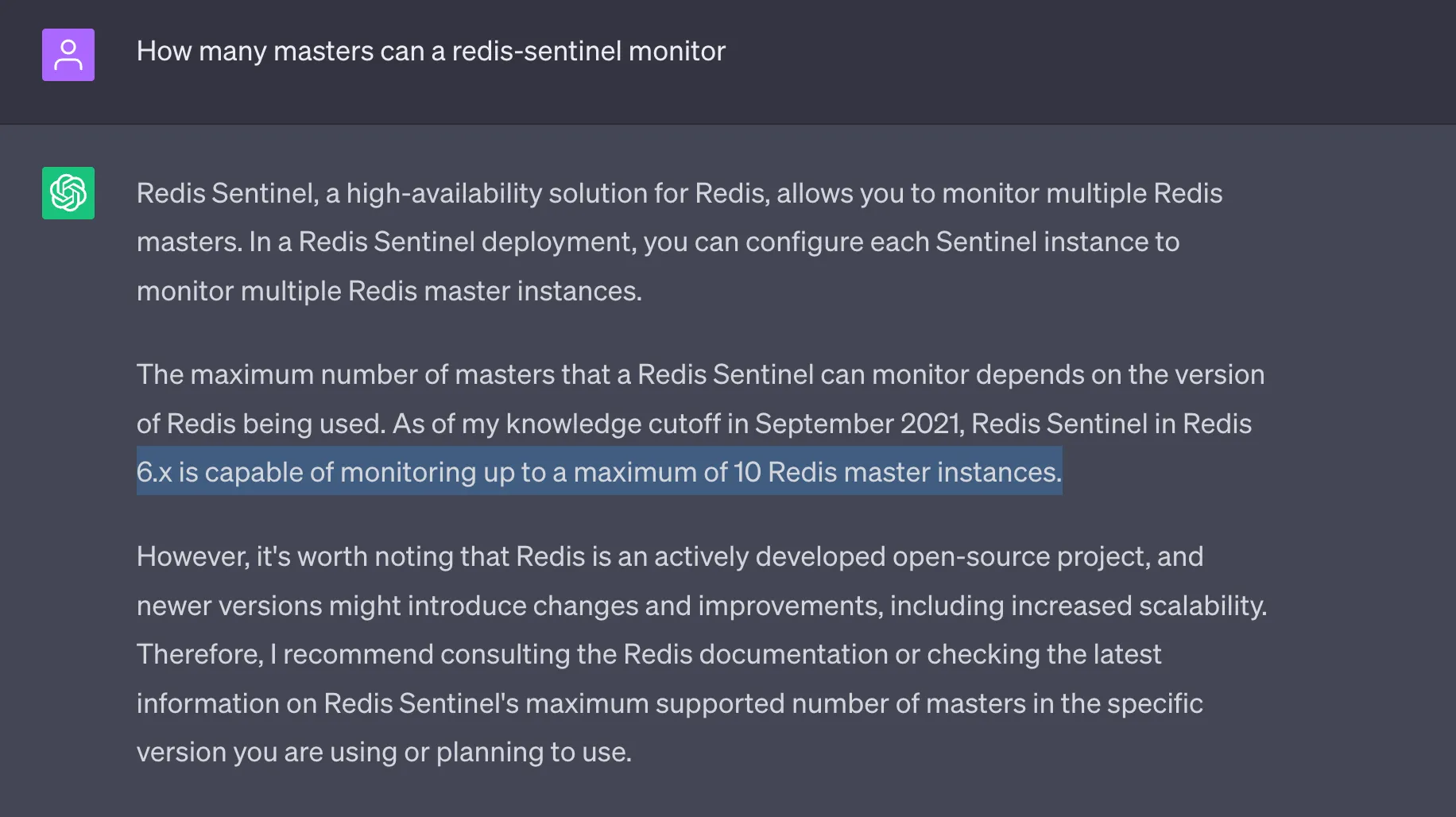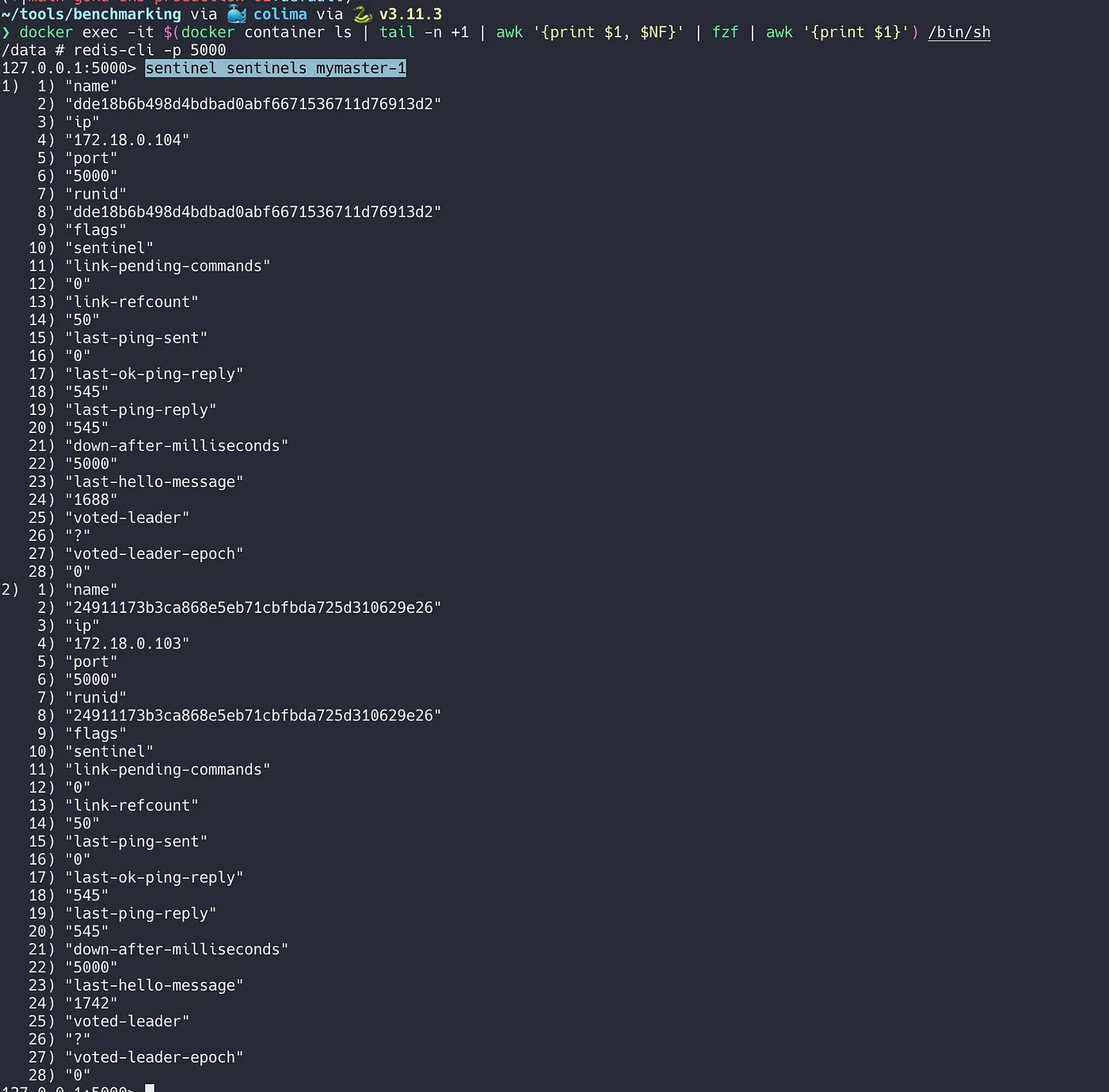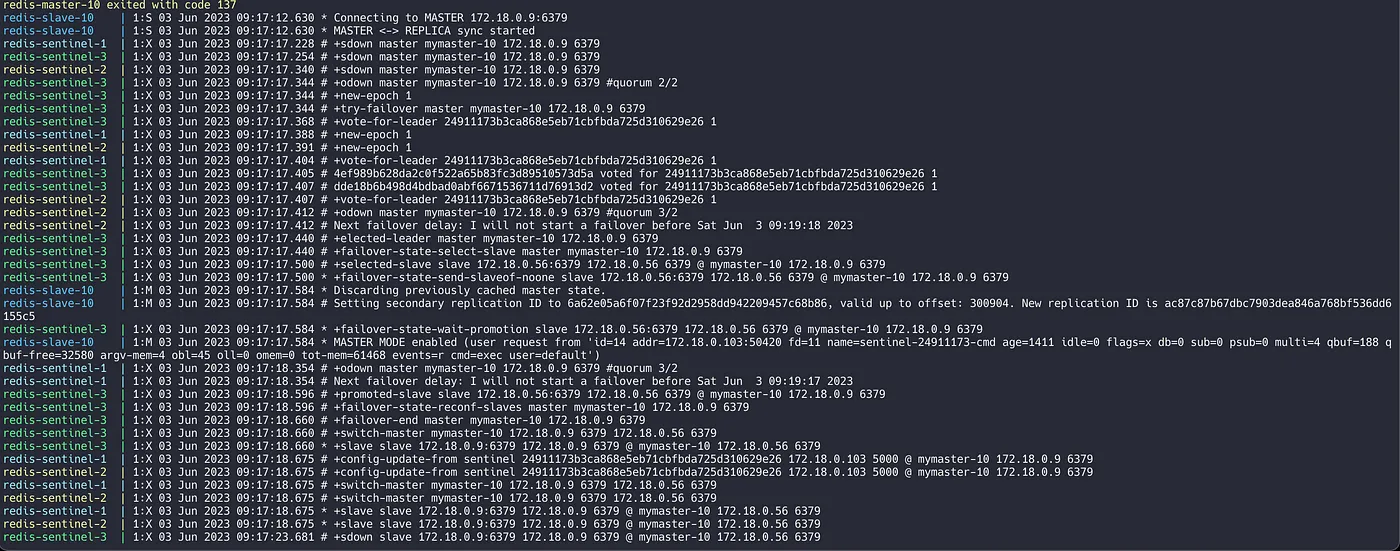Pushing Redis Sentinels to their limit
Script and tips on how to set up multiple master-replica Redis instances and multiple Redis sentinels to monitor them.
Introduction
Before I even introduce this script, allow me to explain why did I even need to write this? Currently, there is no maximum limit documented on the number of masters a single Redis sentinel can monitor at the same time (at least I couldn’t find any after hours of scouring through the Redis Sentinel documentation[1] and their client spec 😢) and I wanted to test the scalability of these
I turned to our good AI friend, chat GPT for its help, who, very weirdly stated that “Redis 6.x can monitor up to 10 masters.”

This was bad news for me because I didn’t want Redis Sentinels to be a point of failure in the scenario I want them to monitor the production level, which is easily >25 Redis master-replica instances. So I decided to go ahead and do what every good engineer should do, create a small POC and test this claim 😁
Small Experiment 🧪
I created this small script to generate a couple of things :
- Docker Compose file which contains the following instances:
- configurable number of Redis master-replica instances.
- configurable number of Redis sentinels.
- Redis Sentinel configuration files.
- Creates as many configurations as the number of Redis sentinels. here?
Steps to use this script
// I am assuming benchmark is your present working directory.
$ cd benchmark
$ mkdir config/sentinel
$ chmod -R 0777 config/
$ python3 docker-compose-gen.py {number of masters} {number of sentinels}
$ docker compose up --remove-orphans
Why give full access to the “config/” folder? 🤔
We did so because corresponding Redis sentinel instances will be creating temporary configs and updating the existing configurations. To ensure that works smoothly, you need to give full permission to this directory before mounting it to the sentinel’s container’s volumes.
Results
I won’t be going deep into what the Redis sentinel’s configurations mean in this blog post, the tutorial[2] in their documentation explains the values well.
Docker resource provisioning
I wanted to simulate a scenario where each sentinel server has 2 vCPUs and 8 GiB memory to work with, but since I have only an M1 and want to scale the setup to ~50 master-replica instances + 3 sentinels, I decided to provision my colima[3] with 6 CPU cores and 10 GiB memory.

Verifying if all sentinels are monitoring a master 🕵️♂️
After creating a configuration with 50 master replicas and 3 Redis sentinels, we can verify if a sentinel process (let’s call it sentinel-1) has registered that other sentinels too are monitoring this master (in this example, it’ll be mymaster-1 ).
1. Verifying via logs
If you notice the logs of your other 2 sentinel processes, you’ll notice a +sentinel event against mymaster-1 .

These +sentinel events show that the particular redis-sentinel has registered a peer sentinel process 4ef980b... running on 172.18.0.101:5000 is also monitoring mymaster-1 which is running on 172.18.0.26:6379 .
2. Verifying by checking the configuration file
If you head into config/sentinel/sentinel-1.conf , and search for mymaster-1 , you’ll notice the following

This sentinel process has registered the other 2 sentinel processes and set that with known-sentinel .
3. Verifying via redis-cli
You could verify the same by running the command sentinel sentinels mymaster-1 in Redis cli of a sentinel server.

Testing failovers 🔥
To test failovers and see the automatic replica to master upgrade in action, you could do one of the following to any master instance.
- Run the following command to put the master instance to sleep for some time:
$ redis-cli -p 6379 DEBUG sleep 30 - Or, you could simply kill a docker container:
$ docker kill redis-master-10

I killed a docker container and let’s dive deeper into the events of what exactly happened from the sentinel POV.
- Each sentinel process emitted a +sdown master mymaster-10 172.18.0.9 6379 event, signifying that they have detected that
mymaster-10is no longer reachable. - The +sdown event got escalated to +odown with quorom of 2/2, means at least 2 sentinels agree that this master is no longer reachable, so a failover can begin now.
- An election occurs for determining which sentinel process will perform this failover, in this election, redis-sentinel-3 (24911173b3ca868e5eb71cbfbda725d310629e26) won (you can verify which sentinel is which by checking
myidfrom their config or check for+elected-leaderbeing emitted from their logs).

- This sentinel process performs a failover right away and
redis-slave-10assumes the master role.

I tried failing over multiple masters at the same time and that went smooth as butter 😮, looks like 10 is definitely not the upper limit of masters which a sentinel group can monitor.
Conclusion ✅
We come to the conclusion that a small group of 3 Redis sentinels can easily monitor and perform failover on ~50 master-replica instances with ease if the entire setup is provisioned with 6 CPU cores and 10 GiB memory and don’t trust AI so easily without performing small experiments yourself 😛
Until next time! 👋